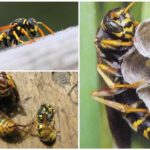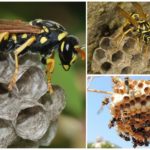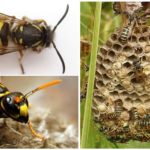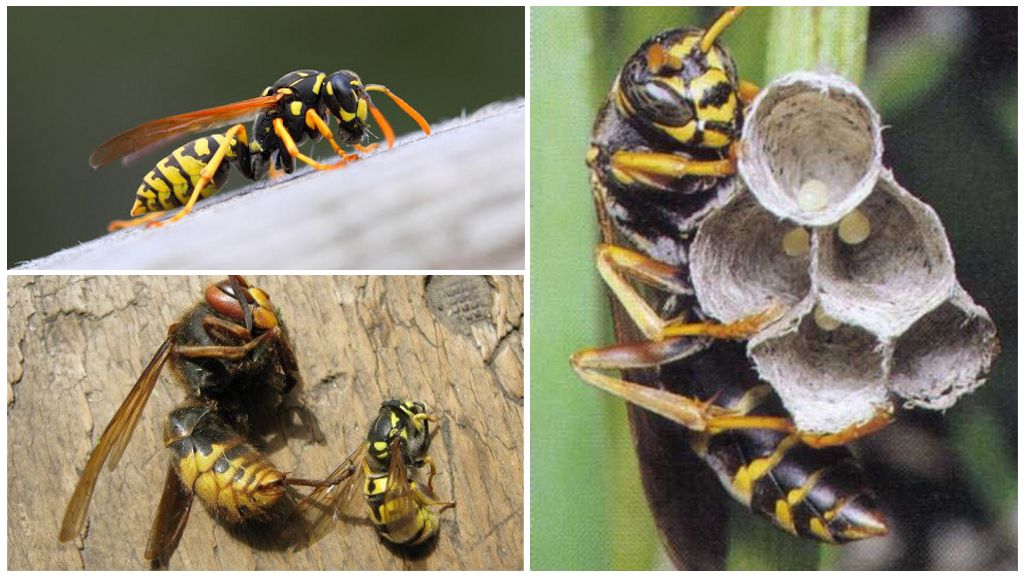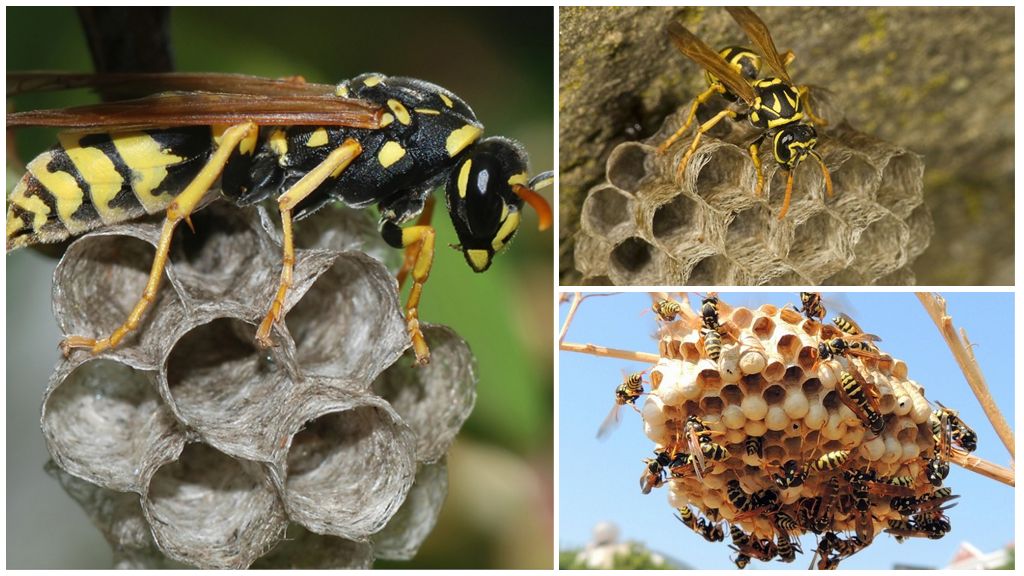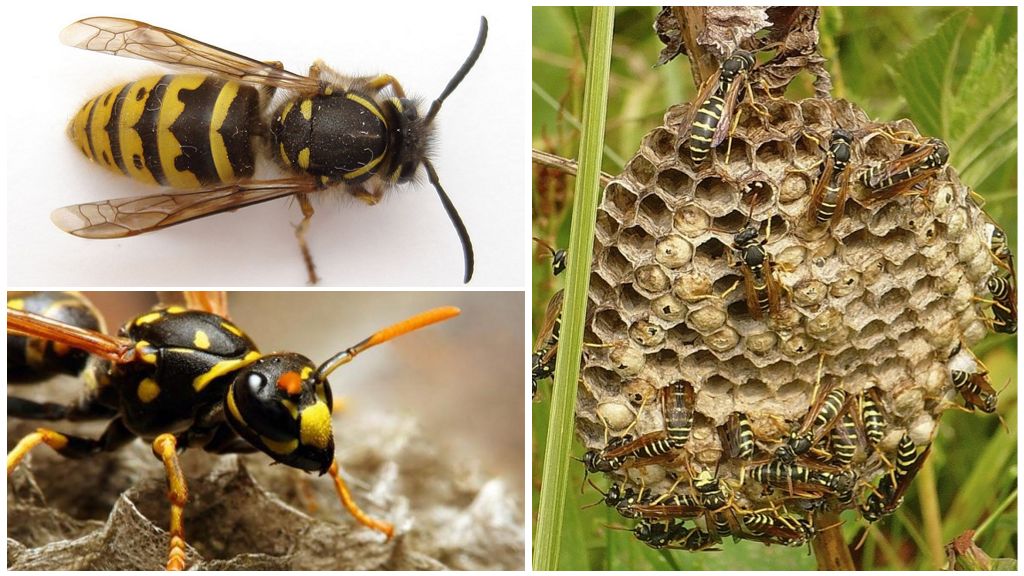How does the uterus look like
Content
- Uterus wasps
- Queen of the Wasp public vespinov
- Uterus wasps paper polistov
The uterus of a wasp is a mature female, whose main mission is to continue the genus, continuous reproduction of offspring. The functions of the queen are performed by the uterus not at all. os species. The hierarchical structure is characteristic of public, paper wasps - Vespina, polist and some other species. Sexually mature females of single wasps live separately, each of them is engaged in laying eggs.
What does the uterus look like
The queen wasp draws particular attention, since there is no one to compare the fertile solitary females with anyone - there are no working individuals. Body length from 10 to 40 mm, the color is not only striped with a bright black and yellow color. Among the single, primitive representatives of the species are black, blue, red, green, purple colors.
Royal wasp vespinov, polistov different from working individuals in size. Almost 2/3 longer than their body. If the working individual grows to 16 mm, the uterus - to 25. There are no special differences in the structure, structure of the body. Powerful jaws, which the insect uses for self-defense, hunting, and procuring building material, stand out noticeably. Powerful mandibles easily gnaw through the hard parts of the victims, if you can not stick the sting.
There are long whiskers on the head, allowing to catch smells for several kilometers. The head is lowered to the bottom, with complex faceted eyes clearly visible on the sides. At the same time, the wasp sees the picture in different directions, the generalized result is displayed in the form of a mosaic. This feature of vision helps to instantly catch moving objects, light vibrations.
The chest and abdomen are connected by a thin membrane, creating the impression that the body is about to break into 2 parts.Due to this structure, the insect easily puts bites at any angle, skillfully pulls the sting back. A photo of the uterus of the wasp is presented below, where it is possible to examine in detail the color, structure, estimate the size in relation to the working individuals.
On a note!
The main weapon of the uterus is sting - Modified ovipositor, which connects with poisonous glands. Insect squirts poison into the body of the victim, paralyzing in a few seconds. In humans, a toxic substance provokes an allergic reaction of varying intensity.
Lifestyle, basic functions
The behavior of a fertile female, the lifestyle of different species of the wasp family is different, but the main mission - the extension of the genus, is preserved.
Solitary uterus
Activity is shown in early spring - the marriage period begins. Eggs start laying in summer. Before that, they live for their own pleasure - they collect the nectar of plants, drink the juices of fruits and berries. Do not form multi-tiered nests, dig holes in the ground for laying eggs.
The uterus prepares the nest in light, easy-to-dig soil. The depth reaches 5 cm, a single cell is placed at the bottom.
Interesting!
The female paralyzes the larvae of large beetles, spiders, various insects, pulls into the hole, lays an egg on the body. After a few days, the larva appears, which within 14 days devours the prey.
In this way, the uterus provides the larva with separate housing and food. At the end of the cycle pupation occurs. In the pupal state, the larva winters; in spring, young females, males, independently start to mate.
Public Vespina
The queen wasp is the founder of a large family, within which there is a clear hierarchy. Most of the society are working individuals - immature females. They are engaged nest building, provide protection, find food, feed the larvae.
The young uterus lays the foundation of the nest in a favorable place. Initially forms a leg, then spreads the honeycomb. In each cell lays an egg. After 3-4 days there are inactive larvae, which need to feed 2 weeks. The uterus hunts for spiders, insects, because young require protein food. Chews, forms balls, gives the larvae.
At the end of the cycle, the larva pupates, after 2-3 days a working individual appears, on which the uterus assigns all the responsibilities for building a nest, searching for food, caring for the larvae. The very same becomes the queen of the family, is engaged only in laying eggs.
In August, large-sized honeycombs are adjusted to the nest, where special eggs are placed. A generation of young sexually mature females, males, emerges from them. They live in a nest for some time, in the fall they get out, mating occurs. With the onset of cold weather, working individuals die, females seek shelter in the wood for wintering.
On a note!
According to some sources, the former queen dies in November, according to the second she hides, winters. Forms a new family in the spring, has properties to return to former places. From here the life expectancy of the queen is calculated from 1 to 2 years.
Paper sheets
They occupy an intermediate position between primitive solitary wasps and public vespina. In one nest there can be several sexually mature queens, but only one plays the role of the queen. The rest help her in increasing the number of populations. The number of the hive reaches several hundred individuals.Otherwise, the function of the uterus is identical to the spins.
Interesting!
In nature, there are many species, subspecies, genera of wasps. Among them there are predatory uteri or parasites that make their way into someone else's nest, kill the true queen, take its place. Enslaved family cares for the larvae of the new queen, feeds her herself. Over time, only her offspring remains in the hive.
The danger of human uterus bites
The queen flies freely in the spring when she looks for a suitable place for the nest, in the fall when she leaves her. He spends most of his life in a nest; he does not get out. The meeting with the uterus occurs much less frequently than with workers.
The queen behaves calmly, carefully, because she understands what an important mission she has been entrusted to. When meeting with a person, he tries to hide imperceptibly, rushes to attack only in case of a threat to his own life or her new nest.
The sting of the wasp's uterus is slightly thicker, therefore bite somewhat more painful. Instantly there is swelling, redness, swelling. Further symptoms depend on the individual characteristics of the organism.Symptoms disappear after disinsection of a wound within a week or special treatment with antihistamine, antiallergic drugs is required.

